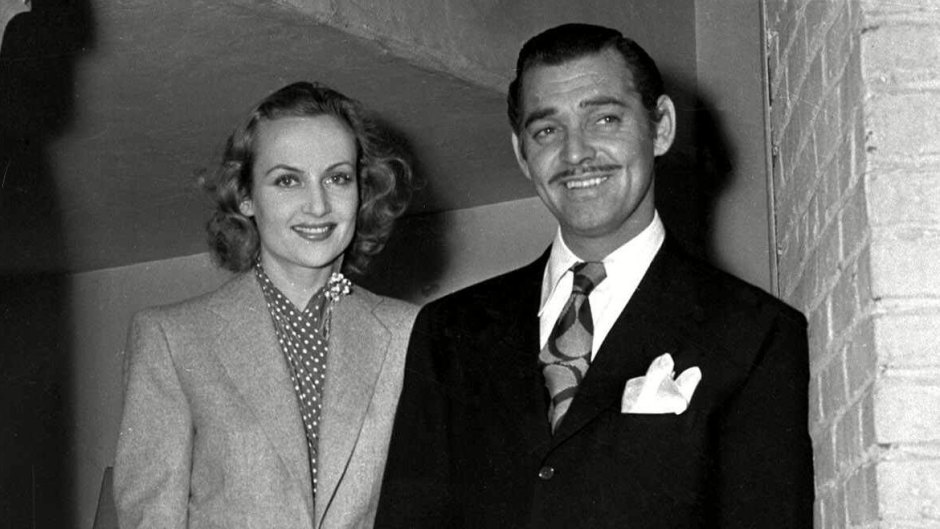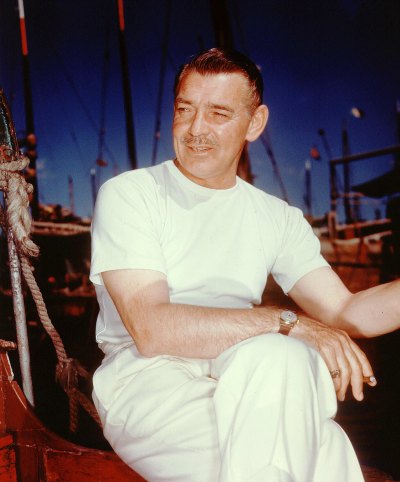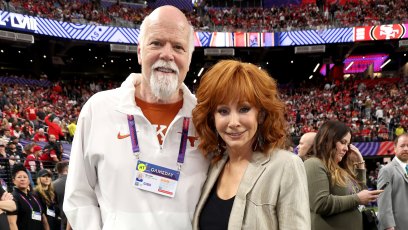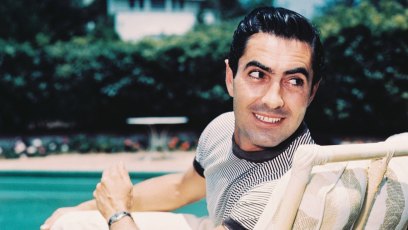
AP/Shutterstock
Clark Gable’s Love Interests Helped Pave His Road to Superstardom: ‘He Never Had a Mother Figure’
Clark Gable had doubts about playing Rhett Butler because the original Gone With the Wind script required him to cry. The legendary star, known as the King of Hollywood during the 1930s, built his career by cultivating a dashing yet masculine persona that belied the blue-collar circumstances of his upbringing. But with diligence — and the help of the women who loved him — he became one of Hollywood’s first superstars. “He married older women in the beginning because he never had a mother figure,” film historian Pierre Montiel exclusively tells Closer.
The Ohio-born actor’s mother died when he was an infant, leaving William Clark Gable in the care of his gruff father, who drilled oil wells for a living. “His father was not a warm person. Clark just tolerated him,” Robert Matzen, author of Fireball: Carole Lombard and the Mystery of Flight 3, shares in Closer‘s latest issue, on newsstands now. A tall, gangly child with large ears, Clark suffered from shyness and retreated into the sonnets of Shakespeare. Though mechanically inclined and a good huntsman, he passionately loved literature and music.

As a young man, he worked a variety of odd jobs and even spent time as a lumberjack before inheriting $300 from his mother’s family at age 21. The money bought Clark’s freedom and allowed him to leave Ohio and his father behind. “He met an acting group on the West Coast that was run by Josephine Dillon, who was 14 years his senior. She took him under her wing,” relates Montiel. Josephine had Clark’s teeth straightened and hair cut, and she devised a diet and exercise regimen to bulk up his scrawny frame.
With better posture, the right clothes, and training to deepen his high-pitched voice, he began to look and sound like a leading man. Despite their age difference, the couple wed in 1924. “It was a strange marriage, but it worked for a few years,” notes Montiel. “He found work as a film extra and on stage, but after the ’20s went by, he drifted away from Josephine.”
Clark moved up into a new marriage to Texas socialite Maria Langham. Though she was 17 years older than Clark, Maria gave him a pass into high society. “He learned how to socialize with that kind of crowd and became very well liked,” shares Montiel. Without Josephine to manage his career, Clark signed up with Minna Wallis, who urged MGM to capitalize on his masculine “lumberjack in evening wear” appeal. It worked.
Movie lovers who came to see the rising star in 1931’s Dance, Fools, Dance, costarring Joan Crawford, swooned. “Never have we seen audiences work themselves into such enthusiasm,” crowed The Hollywood Reporter.

Though it feels out of step with today’s values, Clark’s propensity to be rough with his women in films — like the famous GWTW scene in which Rhett carries a protesting Scarlett up the stairs to the bedroom — added to his masculine allure. “It played into fantasies of the time, to have a good-looking man give you the caveman treatment and then make love to you,” says Montiel. “It was something that no man had done before in movies. It helped Clark take Hollywood and the world by storm.”
With a reputation as the ultimate ladies’ man, it’s no surprise that Clark was an unfaithful husband, engaging in many casual affairs. “He used women for his ego and his pleasure,” says Matzen. That began to change when he met 24-year-old comic actress Carole Lombard on the set of 1932’s No Man of Her Own. Though the pair did not immediately start an affair, they became buddies. Carole even felt comfortable enough to poke fun at Clark by gifting him with a large baked ham bearing his likeness!
Four years later, Clark and Carole met again at the Mayfair Ball, a glamorous annual event where they danced, talked and spent a magical night together. “It is an extra dividend when you like the girl you’ve fallen in love with,” the Misfits actor once said. As a couple, Clark and Carole, who wed in 1939 soon after his divorce from Maria was finalized, were perfectly matched. “She wasn’t afraid of him and would put him in his place. She also taught him how to be more down to earth,” says Montiel. In turn, Carole joined Clark on his expeditions. “She was a tomboy. She became a capable camper and hunter to please him,” says Matzen.
Carole also brought Margaret Mitchell’s best-seller, Gone With the Wind, to Clark’s attention and urged him to make the film despite his misgivings. The role of Rhett Butler, would, of course, cement his legend in Hollywood. After their marriage, the pair moved to a farm, where they raised poultry. Clark continued to act, but Carole took fewer jobs, hoping to start a family. But it wasn’t to be. The plane bringing Carole home in 1942 from a tour selling war bonds crashed on takeoff in Las Vegas, killing all 22 people on board and leaving Clark grief-stricken. “It’s like he aged 10 years in one weekend,” Matzen says, adding Clark “lost his drive to be a movie star and started drinking a lot more.”
Eventually, the It Happened One Night alum resumed making movies and even married two more times, but no one could ever replace Carole. After his death in 1960, he was laid to rest beside her. “It was a perfect thing,” he said of his lost love. “I never expect[ed] to find it again.”









































